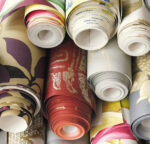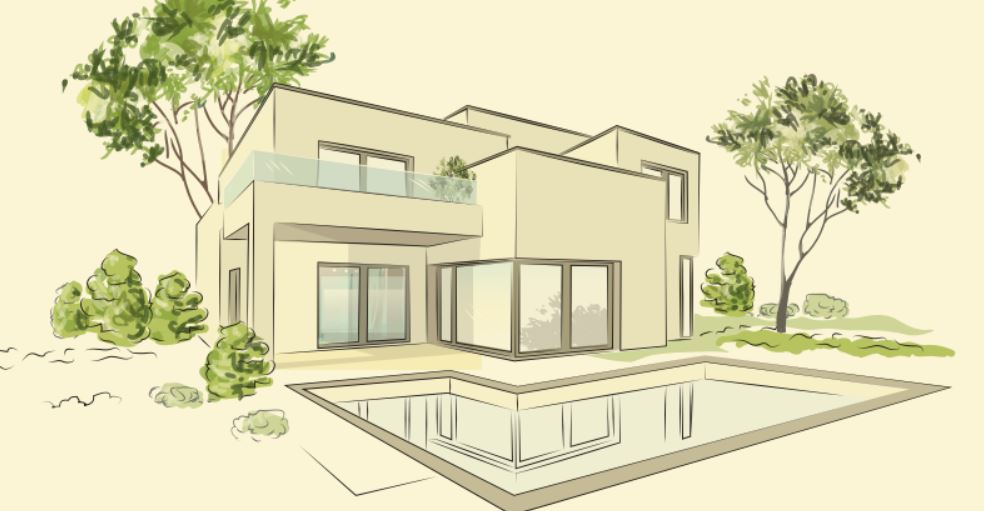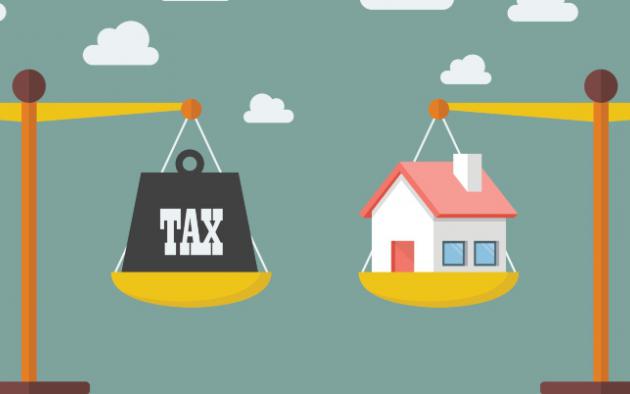The Modern Wallpaper

Centuries ago wallpaper made its debut as a cost saving alternative to wall tapestries used by well-to-do homeowners for decoration. Today’s wallpaper is a stark contrast to the busy floral patterns of yesterday. Modern homeowners desire patterns and hues beyond the white, beige, and gray neutrals of recent, says Chicago-based designer Tom Segal.
Realtor Magazine explains that today’s manufacturers such as Brooklyn, N.Y.–based Flavor Paper have introduced modern, sometimes funky patterns that include Andy Warhol floral prints and nature motifs. “[Wallpaper] lets my client start and end the day in a joyful way,” says interior designer Phillip Thomas. One of the reasons for the uptick in interest, he says, is because so many artisans now design papers that resemble exquisite works of art. “It gives homeowners an opportunity to create interest in certain rooms and differentiate spaces.”
Developers such as Lexington Homes in Chicago are now using this new trend to their advantage. Enticing buyers to its upscale communities. But as Chicago designer Jessica Lagrange points out, wallpaper is expensive and highly individual. There’s always the chance that the choice may not be a good fit for every buyer. If a resale is in a homeowner’s immediate future, they should have a game plan for its potential removal, she says.
To help buyers or sellers who are curious about using wallpaper to complement an interior without making it look dated, here are some tips on products, trends, and techniques from design experts.
Choosing the room.

Wallpaper is agreed upon by many design professionals as an exciting way to spice up a few rooms, in moderation of course. Just as painting every room in your home a vastly different color is overwhelming, wallpaper can do the same thing if not done right.
Rebecca Pogonitz of GOGO Design Group outside Chicago points out that wallpaper is best used in master bedrooms, entryways, dining rooms, and half baths. Remember to be mindful of adjoining rooms and how they flow together. Connect rooms using the same paint color, this helps to eliminate any choppiness and create fluid transitions.
Experts say that due to its small size, half baths are easily the most popular room to wallpaper. Use dressier, or more fancy paper in dinning rooms to help it feel more special. In the master bedroom, choose a calming pattern and color. After all, the goal of this room is to unwind and sleep. And remember, just because you love a print doesn’t mean it belongs in every room. Los Angeles–based designer John McClain said, “You love a jungle print but you may not want to lie in your bed and stare at it.”
Placement makes perfect.

While it’s still common to see wallpaper applied to all four walls, a growing trend is to just apply it to one wall as an accent. Designers and homeowners will often place this accent wall behind a bed, around a fireplace, or even on a ceiling. Beware of using it below chair rails or as a room border though. This can date the look.
There are also removable peel-and-stick versions of wallpaper. This is perfect for those renting, not looking to stay in their home long term, or just don’t want to commit. Now more than ever, there are more colors and patterns to choose from, often less expensive than the traditional papers.
The color that warms your soul.

It doesn’t appear that any single color has dominated this trend. Rather, a rainbow of saturated hues rather than pale neutrals are experiencing a growing popularity. Designer Tom Segal says that neutrals still have their place though, especially when the patterns are small or paired with a texture. And many manufacturers will make custom color papers when you can’t find that exact color.
Pattern and scale.

The most popular patterns continue to be oversized, bold geometrics and florals over diminutive, sweet prints. Placement of this look requires some forethought though. Placing these bold patterns on a wall that homeowners spend a lot of time facing, such as behind a television, can be distracting and put strain on the eyes.
In dinning rooms landscape murals and natural motifs are a popular trend. Similarly, digital printing of supersized images and simulations of natural materials, from wood grains to striated stones, has gained traction, says Angel Georgiou, senior marketing specialist for imaging supplies with Canon Solutions America in the Chicago area. “Home owners now can buy standard images off the shelf or turn their own high-quality photos into wall coverings,” says Georgiou. “It makes it easier for consumers to order online and install products themselves without wallpaper paste. Then, later, they can more easily take them down.”
Texture.

Today, wallpapers are made with a variety of textures. Grass cloth, leather, vinyl, silk, linen, suede, and even mother of pearl are just a few. They create excitement and counter the flatness of most paint finishes. Some textures are even woven onto metallic paper so there’s a glint of sheen in the background.
And finally, Sustainability.
Many companies are now aiming to enhance indoor air quality by introducing new breathable wall coverings. Some even offer the environmental sourcing information of these products. “I think we will see more of these, though it’s still a very niche market,” McClain says.
Source:
https://magazine.realtor/home-and-design/feature/article/2019/02/wallpaper-makes-triumphant-return




























Connect With Sandy